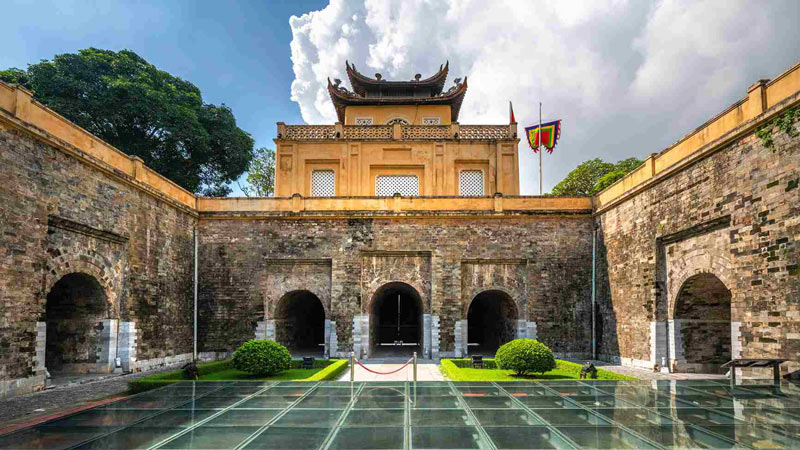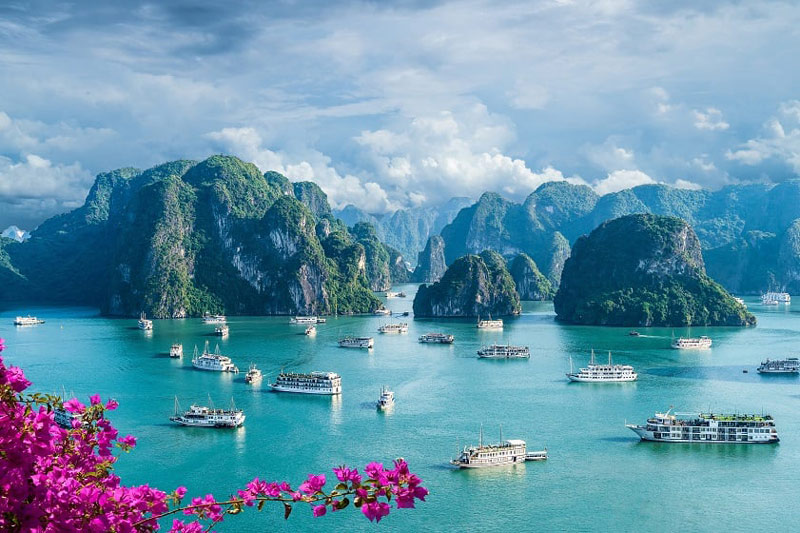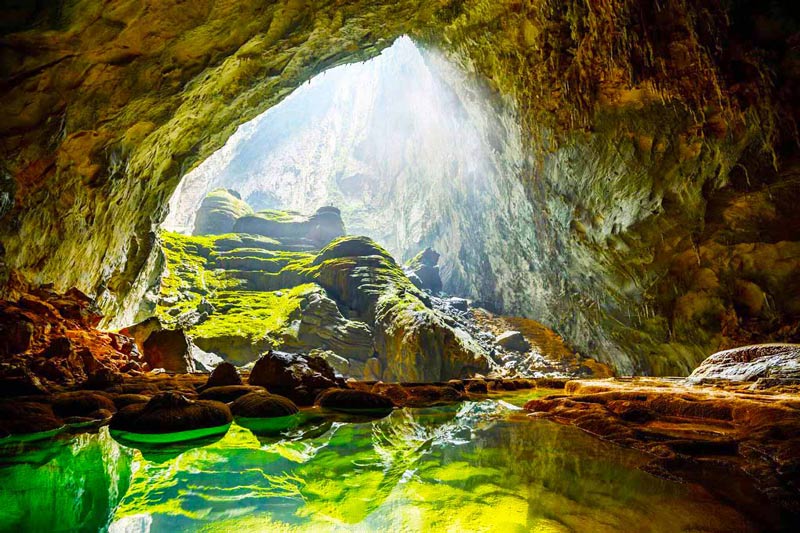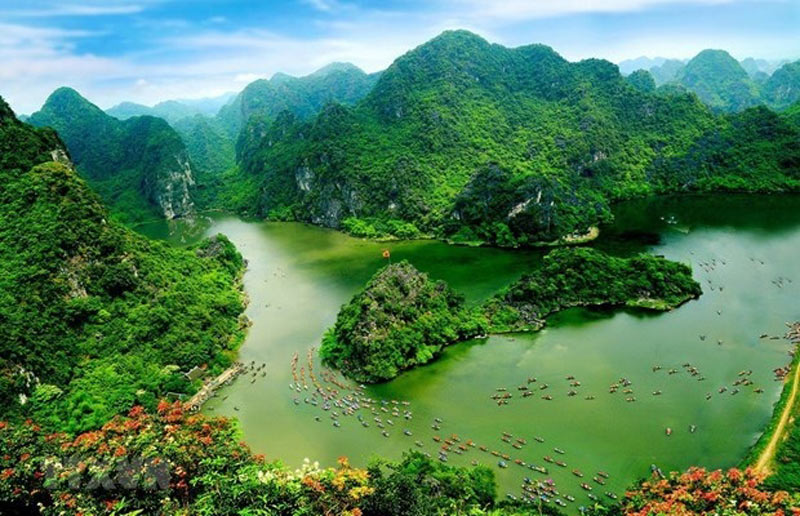Vietnam, with its rich history and stunning geographical diversity, is home to several UNESCO World Heritage Sites, underscoring the country's significant cultural and natural heritage on the global stage. This Southeast Asian nation's historical tapestry is woven from diverse influences, spanning from ancient civilizations to colonial times, all of which are reflected in its architecture, traditions, and UNESCO sites. From the breathtaking landscapes of Ha Long Bay to the historic depths of Hue and Hoi An, these sites not only preserve Vietnam's unique heritage but also bolster its appeal as a must-visit destination for travelers. The existence of these vietnam UNESCO sites highlights the importance of cultural and natural conservation, showcasing the country's pivotal role in the stewardship of global heritage.

Vietnam, a country rich in history and natural beauty, is home to several UNESCO World Heritage Sites that draw visitors from around the globe. These sites are treasures of cultural significance and natural wonder, offering a window into Vietnam's past and present. They are categorized into two groups: Cultural and Natural.
Thang Long Imperial Citadel: Step into the heart of Vietnam's history at the Thang Long Imperial Citadel, where layers of dynasties have left their mark, offering a journey through time.
My Son Sanctuary: Amid the serenity of Quang Nam's forested mountains, the My Son Sanctuary stands as a testament to the spiritual and architectural ingenuity of the Champa civilization.
Hoi An Ancient Town: Wander through the lantern-lit streets of Hoi An Ancient Town, where every corner tells a story of trade, culture, and architectural fusion that has remained unchanged for centuries.
Hue Complex of Monuments: Experience the grandeur of Vietnam's imperial past at the Hue Complex of Monuments, where palaces, temples, and tombs reveal the opulent lifestyle of the Nguyen emperors.
The Citadel of the Ho Dynasty: Marvel at the geometric precision and strategic design of the Citadel of the Ho Dynasty, an architectural masterpiece that showcases the brilliance of 14th-century Vietnam.
Ha Long Bay: Embark on a mystical voyage through Ha Long Bay, where thousands of limestone karsts and isles rise dramatically from the emerald waters, creating a surreal landscape.
Phong Nha-Ke Bang National Park: Venture into the depths of Phong Nha-Ke Bang National Park, a realm of extraordinary caves, underground rivers, and rare biodiversity waiting to be explored.
Each of these UNESCO World Heritage Sites Vietnam offers a unique glimpse into the country's cultural heritage and natural splendor, inviting travelers to immerse themselves in its timeless beauty and rich history.
Vietnam, a country with a rich tapestry of history and natural beauty, hosts several UNESCO World Heritage Sites that are testament to its cultural, historical, and geological significance. From the imperial splendors of Thang Long in Hanoi to the karstic magnificence of Halong Bay, each site offers a unique window into the past and present of this vibrant nation. Let's explore a few of these sites in more detail, unveiling their historical significance, architectural or geological wonders, and interesting facts or stories that make them truly stand out.

The Thang Long Imperial Citadel, a symbol of Hanoi's enduring legacy, served as the political center of the country for 13 consecutive centuries and was the capital of Vietnam for eight centuries. This historical complex features remnants from the Ly, Tran, and Le dynasties, showcasing the rich cultural exchange between the indigenous Vietnamese and their northern neighbors. The citadel's architecture and artifacts reflect the profundity of Vietnamese culture, deeply influenced by Confucian philosophies. An interesting fact about the site is the recent discovery of a layer of ancient palaces buried under the current structure, revealing archaeological treasures that provide deeper insights into Vietnam's imperial past.

Nestled in a remote valley in Quang Nam province, My Son Sanctuary is a breathtaking collection of Hindu temple ruins dedicated to the worship of the god Shiva, known locally as "Bhadresvara." Constructed between the 4th and 14th centuries by the kings of Champa, the sanctuary is an outstanding example of cultural interchange, with influences from Hinduism manifesting in Southeast Asia. Despite suffering from wartime damage, the site's remaining structures stand as a testament to the ingenuity and artistry of the Cham civilization. The intricacy of the brickwork and carvings in My Son is particularly remarkable, with no mortar used in construction, showcasing advanced techniques in brickmaking and decoration that have puzzled scientists and archaeologists alike.

The Hue Complex of Monuments is a stunning representation of the power and cultural richness of the Nguyen dynasty, which ruled from 1802 to 1945. This expansive site includes the Imperial City, a vast complex of palaces, temples, walls, and gates, symbolizing the absolute power of the Nguyen emperors. Beyond its architectural splendor, the site is imbued with the deep spiritual significance of its pagodas, royal tombs, and gardens, designed in harmony with the natural environment and the principles of geomancy (Feng Shui). The meticulous planning and construction of the complex reflect the unique blend of Eastern and Western architectural styles, making it a profound cultural heritage site.

Halong Bay is renowned for its spectacular seascape of limestone pillars and islets in various shapes and sizes. This natural wonder covers an area of around 1,553 square kilometers and is home to approximately 1,600 islands and islets, most of which are uninhabited and unaffected by human presence. The bay's geomorphologic, aesthetic, and geological values, coupled with its rich biodiversity, make it a fascinating subject for scientific research and a magnet for tourists. Legends say that the islands of Halong Bay were created by dragons who descended to defend Vietnam from invaders, spitting jewels and jade into the sea to form a natural fortress.

Phong Nha-Ke Bang National Park, known for its ancient limestone karsts and vast cave systems, including the world's largest cave, Son Doong, is a paradise for geologists and adventurers alike. The park's complex cave and grotto systems are the result of the earth's tectonic movement, making it an outstanding example of Earth's history and providing significant insights into the planet's geomorphic processes. The biodiversity within the park is equally impressive, with many endemic species flourishing in its unique ecosystem. An interesting story about Son Doong Cave is its discovery by a local man named Ho Khanh in 1991, but it wasn't internationally known until a British caving team explored it in 2009, revealing its full magnitude and beauty to the world.
Each of these UNESCO World Heritage Sites in Vietnam offers a distinct glimpse into the country's multifaceted history and natural splendor, inviting explorers and scholars to delve deeper into their mysteries and majesty.

The preservation of UNESCO World Heritage Sites in Vietnam holds immense significance for multiple reasons, ranging from cultural heritage and education to environmental conservation and economic benefits. These sites are not just monuments or natural landscapes but are testaments to human ingenuity and nature's marvel, offering invaluable insights into our past civilizations, traditions, and ecosystems. By safeguarding these sites, we ensure that future generations can learn from and appreciate the diverse histories and cultures that have shaped humanity and the natural world.
However, the journey towards the preservation of these treasures is fraught with challenges. One of the primary threats facing Vietnam's World Heritage Sites is the rapid pace of urbanization and industrial development, which often encroaches on the protected areas, leading to habitat degradation and a loss of historical integrity. Climate change also poses a significant risk, with rising sea levels and increased frequency of extreme weather events threatening both cultural and natural sites. Additionally, the surge in tourism, while beneficial economically, can lead to overcrowding, pollution, and physical wear and tear if not managed sustainably.
To combat these threats, a comprehensive approach is required, involving local communities, national governments, and international bodies in conservation efforts. It is crucial to balance development and conservation, ensuring that progress does not come at the expense of our global heritage. Through education, sustainable tourism practices, and the implementation of advanced preservation technologies, Vietnam can safeguard its UNESCO World Heritage Sites for the enjoyment and enlightenment of all humanity.

Vietnam, a country with a rich tapestry of cultural and natural beauty, is home to an array of UNESCO World Heritage Sites that are a testament to its diverse heritage and historical depth. These sites, ranging from the awe-inspiring landscapes of Ha Long Bay to the ancient town of Hoi An, the imperial city of Hue, and the enigmatic My Son Sanctuary, offer a glimpse into the country's past and present, showcasing the harmonious blend of Vietnam's natural splendor and its cultural intricacies.
The value of Vietnam's UNESCO sites lies not only in their breathtaking beauty but also in their ability to educate and inspire those who visit. They serve as living museums, each telling its own story of the country's historical, cultural, and environmental journey. These sites are vital in attracting tourism, which plays a significant role in Vietnam's economy, bringing people from all corners of the globe to witness the country's unique heritage firsthand.
Moreover, these sites promote cultural exchange, providing a platform for visitors to learn about Vietnam's traditions, customs, and way of life. They are places where dialogue is encouraged, and understanding is fostered, bridging the gap between diverse cultures and contributing to global harmony.
In conclusion, Vietnam's UNESCO World Heritage Sites are not just tourist destinations; they are treasures that speak of the nation's soul, waiting to be discovered and appreciated. They invite travelers to immerse themselves in Vietnam's rich history, to explore its stunning landscapes, and to engage with its vibrant culture. We encourage readers to embark on this journey, to explore these wonders, and to experience the beauty and diversity of Vietnam for themselves